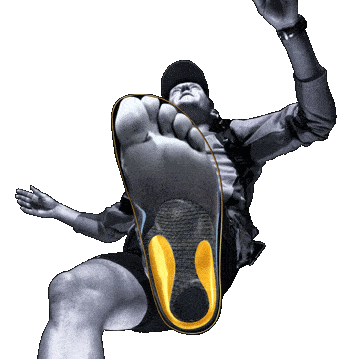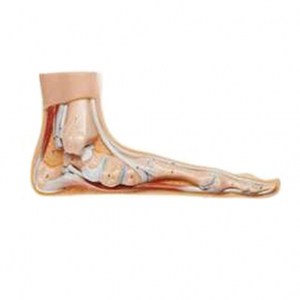Pronation and over-pronation
Pronation is the normal movement that the foot makes to adapt to the ground when walking or running. As the foot disperses the impact of the heel striking the ground, the arch of the foot stretches and flattens as the arch rolls inwards. For the foot to function as it should, a reasonable amount of pronation is necessary.
Excessive pronation can be present at birth or develop at an early age and is often a hereditary condition. However pronation can develop as a symptom of foot abuse from any of the following factors:
- Muscles can weaken due to aging or heavy strain placed on the feet which may cause pronation.
- Shoes that don’t provide good arch support may be a contributing factor to the development of excessive pronation.
Excessive or Over Pronation occurs when the foot arch flattens, collapses and the soft tissues stretch which in turn causes the foot to twist outwards. When this happens the joints that should be stable become flexible and loose.
Excessive or over pronation may cause fatigue due to the strain and misalignment of the ligaments, tendons and muscles in the foot. If left untreated it can cause permanent problems. The misalignment will eventually cause muscular inefficiency which can reduce endurance and speed when walking and running.
Common injuries caused by excessive pronation
Among the most common injuries caused by excessive pronation are:
2. Shin Splints
3. Flat Feet
If you think that you may be suffering from excessive pronation, there are three methods which you can do at home to test:
1. Look at your running shoes from the back with the toes pointing away from you. If your shoes are worn on the inside of the sole in particular then pronation could be a problem.
2. Take a look at your feet whilst standing in an upright position. Do you have a clear arch on the inside of your foot? If you do not have an arch and the inner sole of the foot touches the floor then your feet are over pronated.
3. Do you have hard skin in a strip down the middle of the sole of the foot. A pronated foot type is more prone to extra pressure that can lead to painful callosities here.
Podiatry clinics such as ProGait offer a Biomechanical Assessment which includes a gait analysis and a pressure plate analysis. The assessment looks at the cause of the over pronation and how it affects your gait and movement as a whole.
Once a diagnosis has been made there are several treatment options:
Orthotics provide a unique foot support system that provides stability and arch support. Orthotics can be bought off the shelf or may need to be custom made depending on the requirement of the orthotic. Orthotics treat the underlying cause of over pronation and prevent future occurrences of the associated foot or leg condition.
Footwear with a firm heel and strong arch support are recommended. IT would be wise to go to a specialist shoe shop or running shop if you are shopping for trainers. A specialist may look at your gait to determine your foot type and therefore the type of shoe which you require.
Stretching your feet, ankles and legs ensures overall flexibility and suppleness. The exercises will increase blood flow and reduce the extra stress and tightness brought on by excessive pronation.


